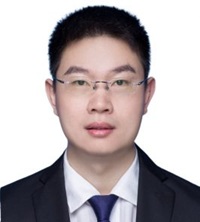
Prof. Dongrui Wu, Huazhong University of Science and Technology, China
Bio: Dongrui Wu (IEEE Fellow) received a B.E in Automatic Control from the University of Science and Technology of China, Hefei, China, in 2003, an M.Eng in Electrical and Computer Engineering from the National University of Singapore in 2006, and a PhD in Electrical Engineering from the University of Southern California, Los Angeles, CA, in 2009. He is now Chair Professor and Vice Dean of School of Artificial Intelligence and Automation, Huazhong University of Science and Technology, Wuhan, China. His research interests include brain-computer interface and machine learning. He has more than 200 publications (17000+ Google Scholar citations; h=69), with 7 outstanding paper awards. His team won National Champion of the China Brain-Computer Interface Competition in seven successive years (2019-2025). He is the Editor-in-Chief of IEEE Transactions on Fuzzy Systems.
Speech Title: Machine Learning in Brain-Computer Interfaces
Abstract: A brain-computer interface (BCI) enables direct communication between the brain and external devices. Electroencephalograms (EEGs) used in BCIs are weak, easily contaminated by interference and noise, non-stationary for the same subject, and varying across different subjects and sessions. Thus, sophisticated machine learning approaches are needed for accurate and reliable EEG decoding. Additionally, adversarial security and privacy protection are also very important to the broad applications of BCIs. This talk will introduce machine learning algorithms for accurate, secure and privacy-preserving BCIs.
